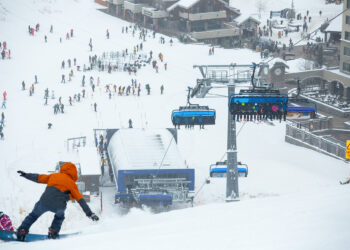An interview with local wildfire photographer Jessica Hays
By Mira Brody VP MEDIA
On Sunday, Aug. 17, Bozeman photographer Jessica Hays went out to the smoldering, but still active McAllister Fire outside of Ennis. The fire had already scorched 3,500 acres and despite some helpful weekend rain, was still giving fire crews plenty to do since lighting ignited it on Aug. 16.
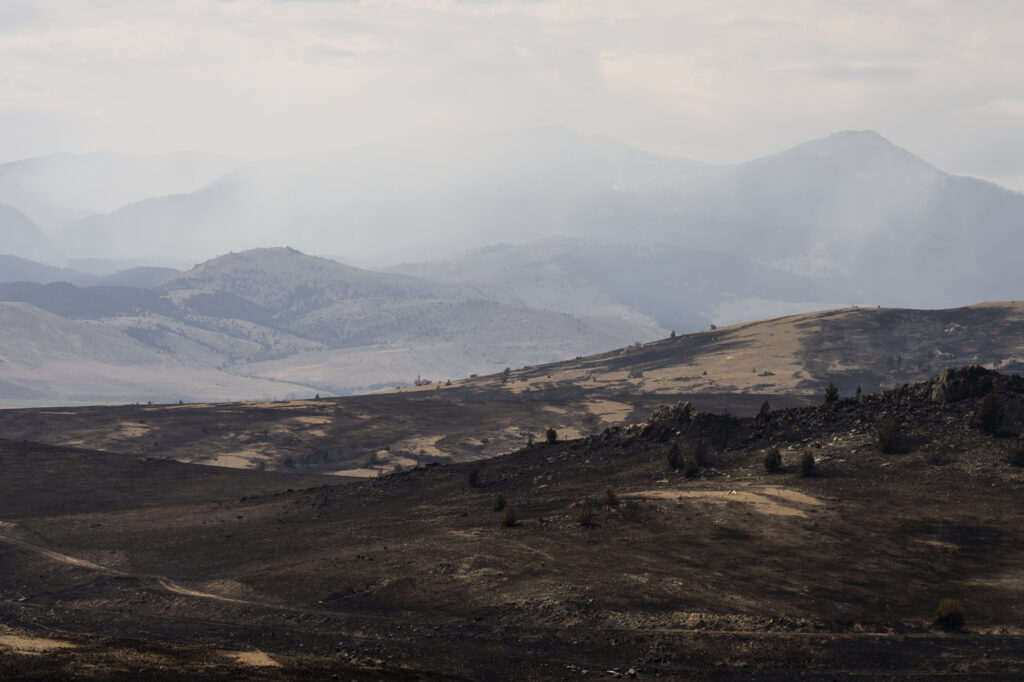

“Sometimes the fires come to me,” Hays said. “Other times I go to the fires purposefully … like the fire season of 2020 and then 2021, a lot of places that I was really personally connected to were on fire.”
Hays has been following fire with her lens for five years, culminating into her book, “The Sun Sets Midafternoon,” which documents the rise in megafires due to climate change and examines the immediate aftermath on surrounding communities. It includes essays by fellow photographer Tim Carpenter and environmental historian Stephen J. Pyne and is heading to print with Fall Line Press as a limited edition run after its kickstarter closes on Aug. 28.
Hays has photographed over 50 fires, and counting, across all contiguous states. There seems to be no shortage.
Her photos capture the orange-tinged skies, charcoal black trees, billows of smoke and the stillness that follows the chaos of wildfire. Interwoven into the visual destruction of a landscape is solastalgia, she explains: emotional or existential distress caused by negative environmental change.
Watching the Bridger Mountains burn during the Bridger Foothills Fire in 2020, a mountain range she grew up in as a Bozeman native, Hays became fascinated with documenting the psychological effects of dramatic change in a place that defines you as a person.
“I think this idea that we can grieve a place or have emotional responses to negative environmental change is rather new,” Hays said. “I’m hoping to connect with people to just talk about how they relate to a landscape. I think that and land in general—the places underneath our feet—are very important to us even when we think they’re not.”
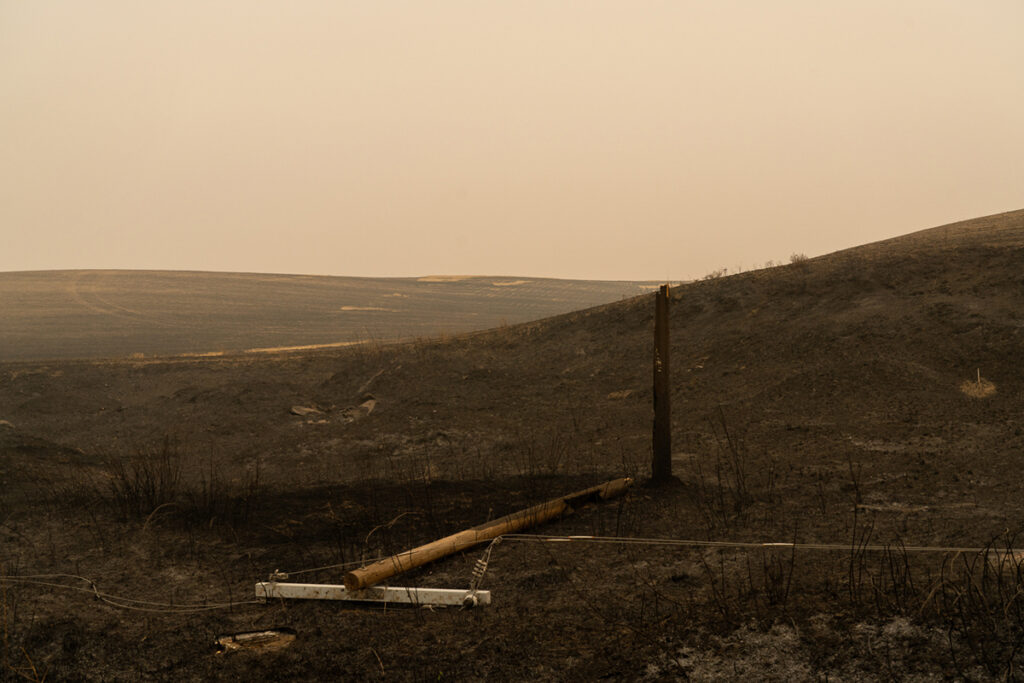
Downed Line, USA, Malden, WA, A Powerline outside Malden goes down in a fire that burned through the community on Memorial Day Weekend. 2020 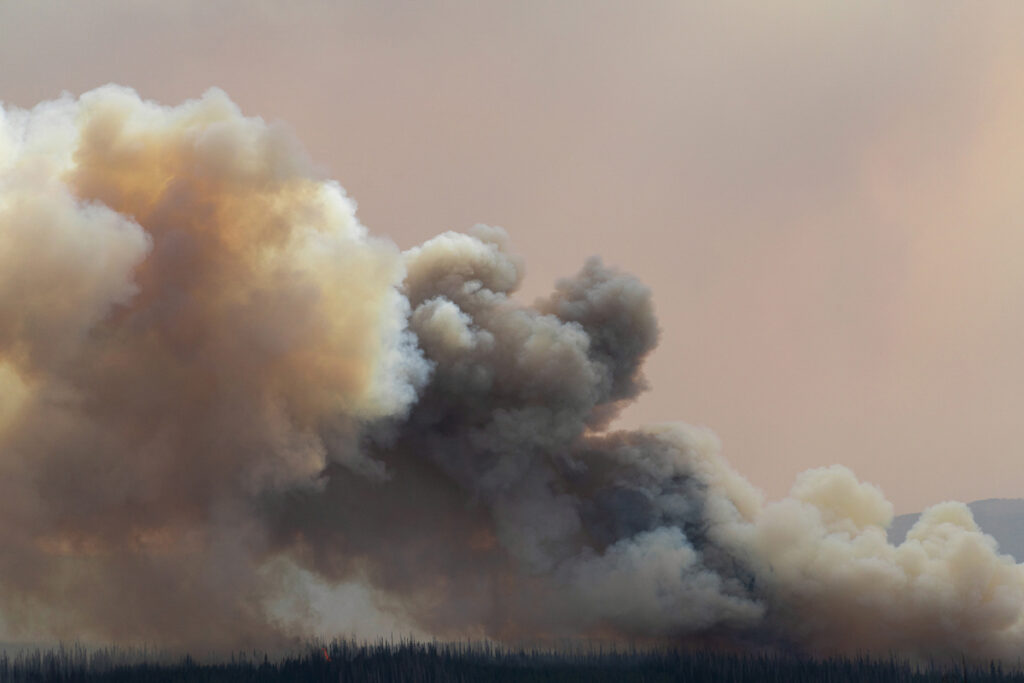
Mullen, USA, Centennial, WY, A pyrocumulus cloud from a fire in rural Wyoming. 
Murmuration, USA, Palouse, WA, Crows fly across the highway in thick orange smoke. 2020 
River Gorge, USA, Goldendale, WA, Smoke makes it impossible to see the Columbia river gorge from the cliff edge. 2020 
Skeletons, USA, Bozeman, MT, Burned trees overlook the town of Bozeman. Had the wind been blowing the prevailing direction, the fire would have run through town. 2020
Hays recalls her own moment of solastalgia upon visiting Bridger Canyon shortly after the foothills fire.
“I was so overwhelmed by it,” Hays said of her emotional reaction to the starkly altered landscape. “I think I didn’t have a language or words to understand that when I started this.”
That language she once couldn’t find ultimately translated into her book.
Five years later, Hays has driven across the U.S. many times documenting fires or their aftermath in states like Colorado, Texas and Oregon, meeting others who have experienced loss due to fire. In her conversations with them, she finds a shared empathy. She heard from woman recently in Monroe Canyon, the site of a devastating fire currently active in central Utah, and the community near the Mullen Fire in southern Wyoming that torched over 176,878 acres just west of Laramie in the fall of 2020.
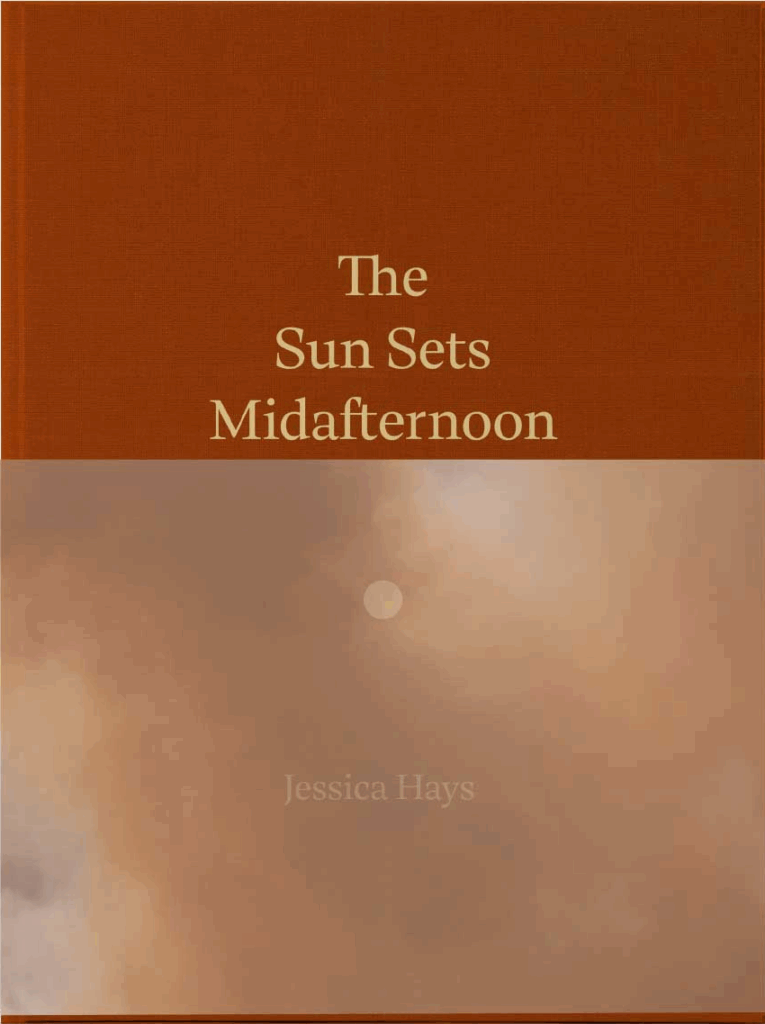
“I have a very vivid memory of being on a highway pullout, photographing this pyrocumulus column from several miles away and being set up there for several hours and speaking to dozens of people who were from the area about their experience,” Hays recalled of watching the 2020 Mullen Fire. “That was really powerful.”
After moving around a lot over the last few years due to work and school, Hays is pleased to be back in her home state, and in the West, where her roots are deeply buried and where the landscape inspires her work. It feeds that relationship to place that “The Sun Sets Midafternoon” speaks to.
The title of the book is a nod to the eerie, false “nightfall” caused by thick layers of smoke that shroud a community during a massive wildfire: the blotted sun, orange, ashy skies and dampened acoustics. She recalled a shot she captured in Oregon in 2020 of birds flying across an otherwise barren roadway. The shot, called “Murmuration,” is featured in her book.
“I saw those birds and I hadn’t seen any animals the whole time I was there,” Hays said. “It felt like this moment, after I had spent a week in this really heavy emotional state. It was really difficult and devastating, but these birds felt so hopeful. This moment of seeing these living creatures moving together felt so symbolically hopeful of being able to move forward and grow from this.”









